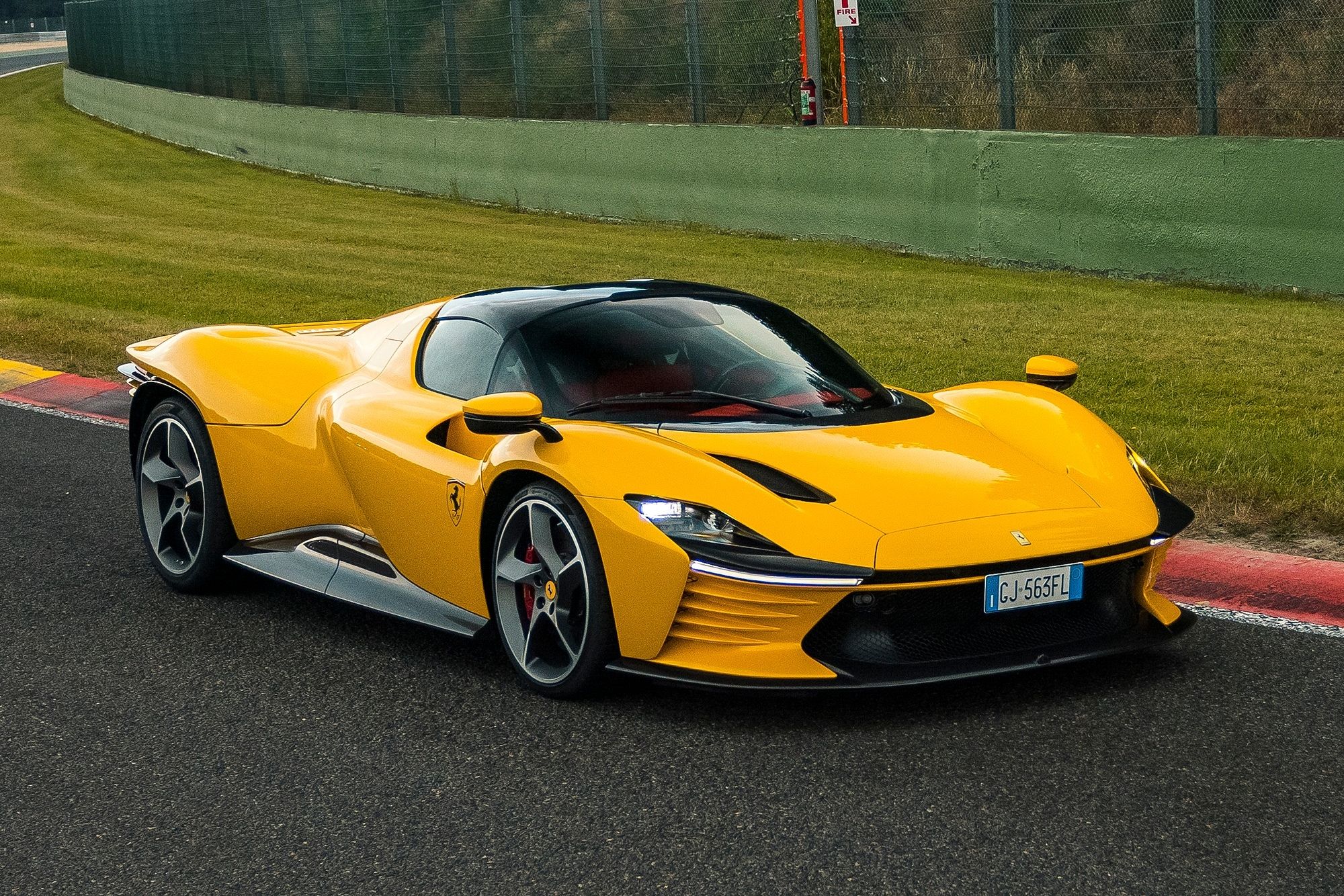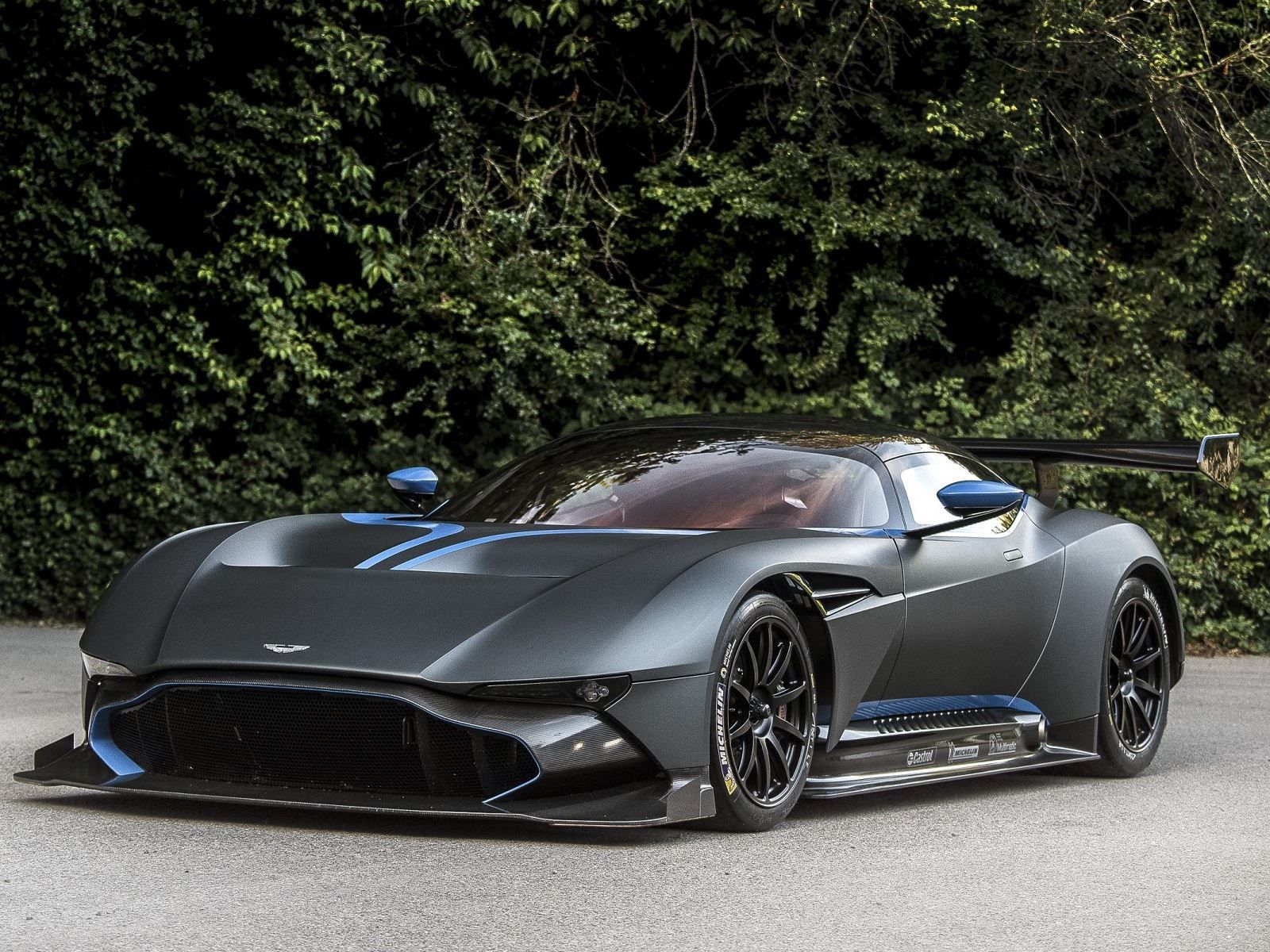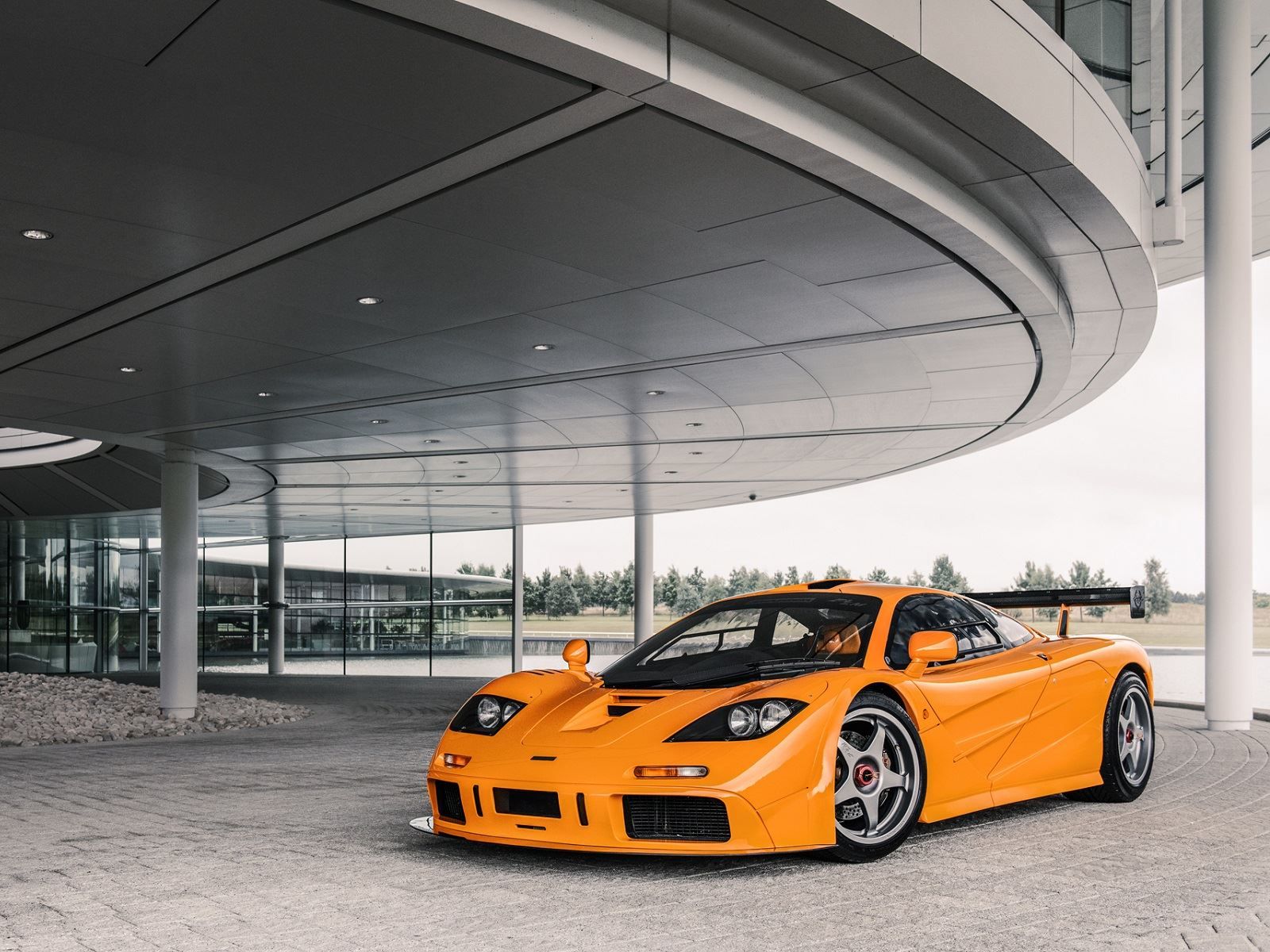
It's a curious fact that despite the proliferation of large, wafty cruisers and mega-horsepower sports cars in America, very few locally built ones ever featured V12 engines. The handful of Packards and Cadillacs that offered such a powerplant were all phased out until after WWII only the Lincoln H-Series V12 remained. Once that went out of production in 1949, the American obsession with the V8 was in full swing, and today, there is not one single American model with a V12 on the roads.
(This article was originally posted in 2018 but has been updated to include the best V12 engines that have been revealed in the years since. While it initially looked like the V12 was dying, we now have more in 2023 than we ever thought we would.)
Europe didn't follow the same path, though, and there have always been a handful of top-tier luxury and sports cars that had a smooth and silky V12 under their hoods. The Germans, Italians, and British have been the most ardent supporters of the V12 engine. Its supreme smoothness is unmatched, and while the packaging requirements and construction costs make it unviable in even mid-range models, as a range-topper, it is hard to beat. Despite the current downsizing trend, there are still a fair few cars with V12 engines in production, and we picked some of the very best examples both past and present. From high-revving V12 supercars to near-silent executive expresses, this is one versatile setup.
1. Ferrari 250 GTO
Enzo Ferrari realized early on that a V12 engine configuration had some worthwhile benefits over four and eight-cylinder alternatives. The Ferrari 125 S of 1947 was the first Prancing Horse to be fitted with one, although it displaced a mere 1.5 liters. This 'Colombo' V12, named after its designer, was continually developed for decades, and in 3.0-liter carburetor form, it powered the iconic 1962 250 GTO - the most expensive Ferrari of all time. This road/race car used the race-proven 250 Testa Rossa all-alloy motor and it pushed out around 300-hp, jaw-dropping power for the time. The Colombo V12 finally bowed out in 1988 by which stage it was fuel-injected and up to 4.9 liters in size.
2. Ferrari Daytona SP3
Ferrari and V12-engine cars go together like peanut butter and jelly, and the F140 V12 engine has become an icon for the brand used in everything from the Enzo to the LaFerrari to the Purosangue and the Daytona SP3. Over the years, it's grown from a 6.0-liter V12 to a 6.3-liter and now a 6.5-liter, but it's never turned to turbochargers for power and instead remains an icon of engineering. In its most powerful road-ready iteration - the SP3 Daytona - it produces 829 hp and 514 lb-ft, and it sings beyond 9,000 rpm as it goes. The future of the naturally aspirated V12 at Ferrari may be questionable, but for its versatility, responsiveness, and sheer emotional value, the F140 family of Ferrari V12s will go down in history as an all-time great.
3. Lamborghini Countach
Ferruccio Lamborghini saw that to compete with Ferrari, he too would need a powerful V12 motor. Enter Giotto Bizzarrini, an engineer whose V12 powered every top Lambo from 1963 all the way up to 2011, spanning from 3.5 to 6.5 liters and upgraded to multivalve heads, dry sump lubrication, and fuel injection along the way. The Countach is one of the most famous cars to be powered by the Bizzarrini V12, first as a 370-hp 4.0-liter in the LP400 and finally as a 450-hp 5.2-liter multivalve unit in the 25th-anniversary edition model. The 661-hp 6.5-liter Murcielago LP 670-4 SV was the last Lambo built that could trace its roots back to this original design.
4. Lamborghini Revuelto
When the Bizzarrini V12 was eventually replaced in the Aventador, you'd have imagined it would stick around another few decades. But instead, Lamborghini reinvented the V12 for the second time in as many generations when it launched the Revuelto. Essentially a highly modified version of the V12 from the Aventador, the Revuelto's L545-designated engine was flipped around 180 degrees to accommodate a new rear-transverse-mounted DCT gearbox, but it retained its 6.5-liter displacement. It'll rev out beyond the old motor, to 9,500 rpm, producing 814 hp and 535 lb-ft, before you add in the electric augmentation of three electric motors.
Not only is it more powerful than the Aventador's V12, but it's 38 lbs lighter and has a higher compression ratio of 12.6:1. Lamborghini could easily have gone with a twin-turbo V8, but it stuck with the purity of a naturally aspirated V12, earning this motor a spot on this list.
5. McLaren F1
BMW made its money with bullet-proof four-cylinder and racy inline-six engines but its handful of V12s marked them out as one of the world's premier engine designers. The McLaren F1 was designed to be the ultimate drivers' car featuring cutting-edge technology and design. Today it's regarded as one of the most important vehicles of the 20th century. McLaren's first choice was a Honda engine but it was BMW that ended up producing the iconic 627-hp 6.1-liter S70/2 V12. It gave the F1 acceleration that still matches up to many of today's turbocharged supercars, and at 240 mph it remains the fastest naturally aspirated car ever produced.
6. BMW M760i/Rolls-Royce Ghost
BMW has a history of building iconic V12s, having already been featured once in this list as the maker of the McLaren F1's famous motor. But its own in-house units are just as special. The N74 is the last of an era, and was available in three forms. The 6.0-liter twin-turbo variant was used in the 7 Series before the BMW M760i bumped that up to 6.6 liters and 602 hp. A variation of this was employed for Rolls-Royce models before being later replaced by a 6.75-liter version developing 563 hp and 664 lb-ft. The latter is an icon of smoothness and refinement and is found today in the Cullinan and Ghost.
7. Mercedes-Maybach S-Class
When the number of V12s dwindled, Mercedes-Benz offered it as a staple across various AMG, Maybach, and regular models, but the 12-cylinder configuration is waning now for even Mercedes. But the M279 6.0-liter twin-turbo Mercedes V12 engine has been kept alive for at least a little while longer through the current Mercedes-Maybach S680, meaning this iconic V12 has now exceeded a decade in use. Throughout that time, it's found limited use but has maintained steady outputs in the region of 600 hp. It peaked in AMG form with 621 hp and 738 lb-ft but currently attains only 664 lb-ft of twist for its more stately duties in the Maybach S-Class.
8. Pagani Huayra R
For years, it was the Pagani Zonda that occupied this spot on this list, and today, it could just as easily be the Utopia, but instead, we've chosen the track-only Huayra R. That's because its HWA-built 6.0-liter V12 engine is naturally aspirated instead of turbocharged, and it's built with motorsport development. More than that, the V12 isn't shared with any other Pagani model. It screams to 9,000 rpm and produces 838 hp and 553 lb-ft. Through a six-speed sequential gearbox, that power reaches the rear wheels, and along the way, it sounds like an F1 car - and that's not just a cliche; it may be the best-sounding V12 we've heard. If we're picking the ultimate V12s, this is one of them.
9. Jaguar E-Type
The British motor industry was once a force to be reckoned with. The Jaguar E-Type was, along with the Aston Martin DB5, one of its crowning achievements. The original 1961 E-Type had a 3.8-liter inline-six, but by the time the Series III models arrived in 1971, this had swelled to a 5.3-liter V12. The engine remained in production until 1997, but in its original form, it made 250 hp. The additional weight and complexity over the inline-six variants made them hardly any quicker, but there was not much out at the time that could offer a smoother drive. The final development was a 6.0-liter V12 which saw duty in the '90s XJS and made up to 318 hp.
10. Aston Martin One-77
The DB7 was a stunning car, but the company's troubled financial status meant that it was built on a modified Jaguar XJS platform, and its AE28 V12 was actually a pair of modified Ford V6 units. It still drove and performed like a thoroughbred, and the 450-horsepower V12 engine displacing 5.9 liters was continually developed and refined. The very limited-edition One-77 was perhaps the ultimate iteration, producing 750 hp from 7.3 liters and sharing almost nothing with the engine it was based on. You can thank Cosworth for that, as it was highly influential in revising the 12-cylinder engine. The latest generation of range-topping Astons now uses a new AE31 twin-turbo 5.2-liter V12, which are great and all, but the One-77's 12 will forever remain an icon.
11. Gordon Murray Automotive T.50
The V12 may have largely fallen out of favor in a world where twin-turbo and hybrid-assisted V8s roam free, but Gordon Murray refused to give up on the V12 concept when he developed a true spiritual successor to the McLaren F1. In search of the purest driving experience - not the one that chases the biggest numbers on a dyno, the highest top speed, or the fastest lap times - he tasked Cosworth with developing a naturally-aspirated V12 that could rev to 12,100 rpm. The Cosworth GMA.1 (The GMA.2 is the codename for the 11,100-rpm version in the T.33 and T.33 Spider) was born, a 4.0-liter V12 that revs beyond 12k while putting out as much as 656 hp in road-going form and delivers a spine-tingling exhaust note. With only 344 lb-ft of torque, it's not the torquiest motor, but 71% is available beneath 2,500 rpm, and the GMA T.50 weighs only 2,174 lbs and has a manual gearbox. As far as goodbyes to the V12 go, this could be one of the top V12 engines of all time. Just a pity it may also be one of the last.
12. Aston Martin Valkyrie
If there's one common theme to find when talking about high-revving V12s, it's that Cosworth builds them better than anyone. So it's no surprise that the Aston Martin Valkyrie's Cosworth-developed RA V12 makes its way onto this list. While it falls a little short of the T.50's redline at just 11,100, the Valkyrie's V12 goes about its chase for revs another way. It displaces 6.5 liters and chases big numbers - 1,000 hp at 10,500 rpm and 546 lb-ft at 7,000 rpm - amping them up further with a Rimac-sourced hybrid system with an extra 160 hp and 206 lb-ft. It's an absolute riot, and when combined with the Adrian Newey-designed chassis (which Aston engineers say is closer to an F1 car than any roadgoing car they've seen), it's a barely road-legal hypercar that batters your senses into submission. One of the finest V12s ever? Undoubtedly.


